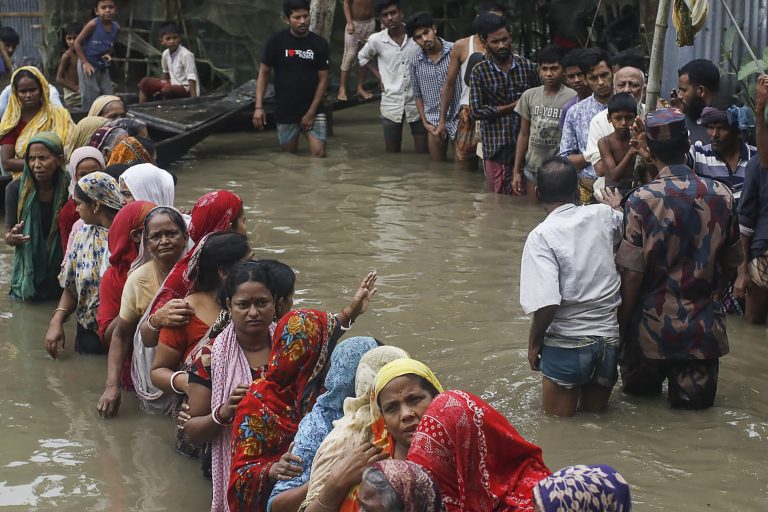On Monday, June 20, monsoon floods struck Bangladesh and India killing dozens of people and driving millions more away from their homes. At the time of writing, the floods are forecasted to get worse in the next few days, prompting emergency workers and the military to take action.
As of Monday, monsoon floods have claimed the lives of at least 59 people in flood-prone Bangladesh and the Indian state of Assam. Bangladesh government officials called the floods the worst since 2004.
According to police, since Friday, 21 people in Bangladesh have been killed by lightning strikes, the BBC reported.
Three of the dead include three children aged 12 to 14 in the town of Nandail, police chief Mizanur Rahman said. According to police inspector Nurul Islam, four more people were killed by landslides that rolled over the city of Chattogram.
In Assam, India, 18 people perished in the floods and subsequent landslides, with another 16 killed in the remote state of Meghalaya, Meghalaya’s chief minister Conrad Sangma wrote on Twitter.
Success
You are now signed up for our newsletter
Success
Check your email to complete sign up
In addition to the dozens of deaths, the floods have also displaced millions of people from their homes who were forced to flee as the waters rose.
The Brahmaputra river, one of the largest in Asia, broke through its banks, striking 3,000 villages and farms throughout Assam. Around 220,000 people have been rushed to makeshift shelters, and an estimated 4.5 million people have been rendered homeless.
Schools have been transformed into emergency shelters to shelter whole villages of people. Train services were shut down in India as the rains continued to pour in, with at least one railway station being submerged and its rail tracks covered in mud and silt.
Millions displaced
“The whole village went under water by early Friday and we all got stranded,” Lokman, a villager from the village of Companiganj, told AFP.
“After waiting a whole day on the roof of our home, a neighbor rescued us with a makeshift boat. My mother said she has never seen such floods in her entire life,” he added.
The floods also struck the northeastern Bangladeshi region of Sylhet, with water levels rising up to knee height. Here, more than 4 million people were displaced, with some 300,000 of them being evacuated to emergency shelters.
“Our house is submerged in water. I’ve never seen such huge floods in my life,” Husna Begum, who lives in Udiana village in Assam, told the BBC. She was taken to an emergency tent to live with her children.
“There is no drinking water in the camp here. My son has a fever, but I am unable to take him to the doctor,” she added.
“We are surrounded by water on all sides. There’s water inside our homes too,” fellow Udiana villager Ronju Chaudhary said.
“The water rose so quickly we couldn’t bring any of our things,” rescued civilian Asma Akter said, lamenting that her family was without food for two days. “And how can you cook anything when everything is underwater?”
READ MORE:
- United Nations Warns of ‘Hellstorm on Earth’ Amidst Compounding Crises Driving Global Food Scarcity
- Torrential Downpours Kill Dozens of People in Southern China
- Dozens Dead as Heatwave in India Shows No Signs of Relenting
To the rescue
The militaries of both India and Bangladesh have responded to the dire situation and sent soldiers on small boats to deliver much needed relief supplies to the affected areas. The government of Bangladesh is also planning to deliver 1,720 tonnes of rice and 58,000 packets of dry food, as well as water purification tablets and medicines, Reuters reported.
“The situation is still alarming,” Mohammad Mosharraf Hossain, Sylhet’s chief administrator, told Reuters.
“We are intensifying our efforts providing relief materials. At the moment, the main challenge is to reach everyone and ensuring availability of drinking water,” he said.
The floods came after another flood struck the two countries last month, when water surged from upstream in northeastern India. The areas affected were still recovering from that flood when the monsoon floods struck again.

















